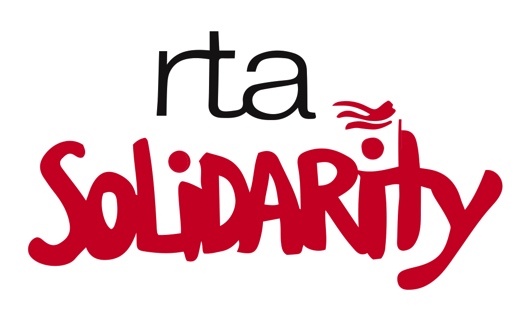The most effective way to combat child abuse is to prevent it from happening at all.
That’s the rationale behind a push by a coalition of local faith leaders, physicians, parents and child advocates who held a press conference on Monday morning to persuade Monroe County Executive Cheryl Dinolfo and the County Legislature to include more funding for prevention programs in the upcoming 2018 budget.
Dinolfo apparently needed no convincing.
In a statement released Monday afternoon, county spokesman Jesse Sleezer noted that the county executive’s 2018 budget, to be released Tuesday, “will “invest more than $500 million in services for children and families, representing over 40 percent of the county’s annual operating spending.”
Additionally, he said, “included in that sum, the county will invest $1.7 million more in preventive programming for children in 2018 — a decision made well before today’s announcement by The Children’s Agenda.”
Learning Monday afternoon that funding had been restored, Brigit Hurley, director of policy and advocacy for The Children’s Agenda said in an email, “This is very good news. We’re thrilled!”
She said she hopes the additional money will go “to programs that have an evidence base to ensure their effectiveness. This is another victory for children and families in Monroe County.”
At the morning press conference, Pittsford pediatrician Dr. David Topa said, “Monroe County does indeed have a child abuse crisis.”
He noted three recent cases that have dominated headlines: “An unnamed girl that survived an attempted poisoning by her grandmother; Zayden Phillips; Brook Stagles. These are the children who were harmed or killed by adults they knew whose stories have appeared in the paper in just the past five days alone.”
Along with other leaders and representatives from The Children’s Agenda on Monday, Topa called for restoration of $1.7 million in county funds that have been eliminated since 2014 from the county’s child abuse preventative initiatives including the Nurse-Family Partnership, Parents as Teachers and Building Healthy Children programs.
These programs help teach parenting skills, ensure healthy pregnancies and young children, provide developmental screenings, strengthen parent-child bonds and promote parent-child activities to encourage language development, intellectual growth, social development and motor skills and help reduce maternal depression.
Research shows that victims of child abuse and neglect have high rates of post-traumatic stress disorder, aggressive behavior, truancy, running away, early alcohol use, binge drinking and using a weapon in adolescence, according to a “White Paper” released Monday by The Children’s Agenda. Childhood visitation programs have been proved to reduce the incidence of childhood abuse and neglect, thus reducing long-term costs and serious future problems. The groups have urged that such programs be expanded.
Topa said the aim of the programs is to help provide parents with services and supports that reduce “toxic stress” on families, thereby helping kids and preventing them from entering the child welfare system in the first place.
“I see families with all the financial and family supports that anyone could ever need struggle with the care of a newborn,” he said. “Now imagine how infinitely more difficult this can be in the presence of extreme poverty, homelessness, isolation or no parenting role models.”
Helen Jones of Rochester did not know where to turn back in 2013, when, well into pregnancy with her son Elijah, she found herself turned out of her marital home and had few resources at her disposal. The Nurse-Family Partnership was a lifesaver.
“The nurse visited me while I had no hope and gave me hope,” she said. The nurse helped Jones keep track of Elijah’s doctor visits, was a sympathetic ear when Jones had nowhere else to turn and helped Jones understand the importance of very early childhood education for her son.
“My nurse has really been a part of my son’s growth, when she came to see us, she would read to my son and she even brought me Braille books so I could read to him myself.”
More than 1,200 letters urging lawmakers to boost funding for preventive programs have been signed by members of 50 different faith groups countywide. They will be delivered later this week.
Adding in $1.7 million for preventive services is not the first initiative Dinolfo has undertaken this year to boost protection of the county’s children. In October, Dinolfo announced an eight-point plan to bolster the county Department of Human Services’ Child Protective Services.
Her plan, lauded by child advocates, redoubled efforts to fill vacant caseworker positions, expand the number of caseworker jobs, increase salaries and reinstate an in-house child abuse hotline that was discontinued in 2015 under then-County Executive Maggie Brooks.
That move “is a huge step forward for kids and families who are involved in the CPS system, certainly there is going to be a much more effective response to child abuse and neglect and reports and we are very grateful for that plan,” said Hurley.
“With this new plan in place, we help alleviate the worst symptoms of child abuse,” said Larry Marx, CEO of The Children’s Agenda. “Our goal must be reducing the number of children entering the system in the first place, preventing root causes with the best evidence-based methods.”
John Rabish, spokesman for the Federation of Social Workers, said it’s critically important to get the funding restored for preventive services. His union represents Child Protective Services caseworkers and investigators.
“Our people are on the front line every day and we see the impact of preventive services, how effective they are are how important they are to children and families,” he said. “One of my favorite quotes is a Frederick Douglass quote where he says, ‘It is easier to build strong children than it is to repair broken men,’ and I think that perfectly summarizes what the folks here are trying to do.”
